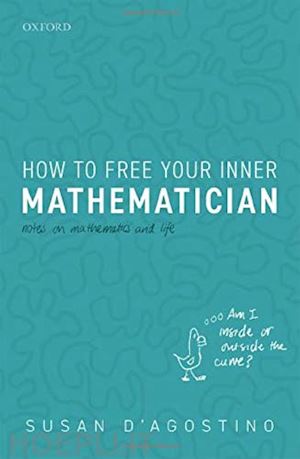1 - Mix up your routine, as cicadas with prime number cycles
2 - Grow in accessible directions, like Voronoi diagrams
3 - Rely on your reasoning abilities, because folded paper may reach the moon
4 - Define success for yourself, given Arrow's Impossibility Theorem
5 - Reach for the stars, just like Katherine Johnson
6 - Find the right match, as with binary numbers and computers
7 - Act natural, because of Benford's Law
8 - Resist comparison, because of chaos theory
9 - Look all around, as Archimedes did in life
10 - Walk through the problem, as on the Konigsborg bridges
11 - Untangle problems, with knot theory
12 - Consider all options, as the shortest path between two points is not always straight
13 - Look for beauty, because of Fibonacci numbers
14 - Divide and conquer, just like Riemann sums in calculus
15 - Embrace change, considering non-Euclidean geometry
16 - Pursue an easier approach, considering the Pigeonhole Principle
17 - Make an educated guess, like Kepler with his Sphere-packing Conjecture
18 - Proceed at your own pace, because of terminal velocity
19 - Pay attention to details, as Earth is an oblate spheroid
20 - Join the community, with Hilbert's 23 problems
21 - Search for like-minded math friends, because of the Twin Prime Conjecture
22 - Abandon perfectionism, because of the Hairy Ball Theorem
23 - Enjoy the pursuit, as Andrew Wiles did with Fermat's Last Theorem
24 - Design your own pattern, because of the Penrose Patterns
25 - Keep it simple whenever possible, since
26 - Change your perspective, with Viviani's Theorem
27 - Explore, on a Mobius strip
28 - Be contradictory, because of the infinitude of primes
29 - Cooperate when possible, because of game theory
30 - Consider the less-travelled path, because of the Jordan Curve Theorem
31 - Investigate, because of the golden rectangle
32 - Be okay with small steps, as the harmonic series grows without bound
33 - Work efficiently, like bacteriophages with icosahedral symmetry
34 - Find the right balance, as in coding theory
35 - Draw a picture, as in proofs without words
36 - Incorporate nuance, because of fuzzy logic
37 - Be grateful when solutions exist, because of Brouwer's Fixed Point Theorem
38 - Update your understanding, with Bayesian statistics
39 - Keep an open mind, because imaginary numbers exist
40 - Appreciate the process, by taking a random walk
41 - Fail more often, just like Albert Einstein did with
42 - Get disoriented, on a Klein bottle
43 - Go outside your realm of experience, on a hypercube
44 - Follow your curiosity, along a space-filling curve
45 - Exercise your imagination, with fractional dimensions
46 - Proceed with care, because some infinities are larger than others











